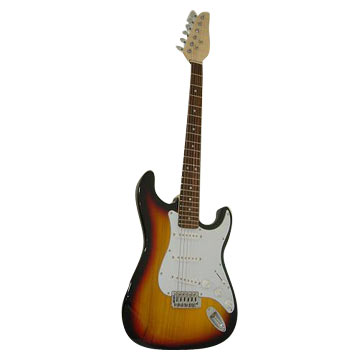
Technically, anyone can “play” the guitar. However, you cannot really play a song until you learn some chords. Thankfully, a TON of popular songs only require a few basic chords and no it’s not just limited to “Twinkle Twinkle Little Star”. In fact, once you journey three or four months deep into learning the guitar you will find that a vast majority of songs only require a few common chords.
Consequently, if you learn the essential guitar chords for beginners you will gain immediate access to a plethora of worthwhile tunes. Master the five beginner chords below and you’re well on your way to learning the guitar. Chords like C, D, & E Major are very important because once you know how to play the G Chord in “Silent Night” you also know how to play the G Chord on every other song that features it. Pretty cool, eh?
ABOUT THE CHORDS: All of the chords below are major chords and commonly found in contemporary music. In order to learn more about chords, namely what separates a major chord from a minor chord you should reference this beginner’s guide to scales.
The A Major Chord
The A major (often referred to as an “A chord”, and sometimes written as “Amaj”) might logically come across as the first chord you should learn because of its position in the alphabet. Unfortunately, the A major chord is a little tricky for beginners because all three fingers need to fit on the second fret (tab below). It’s especially difficult for guitarists with larger fingers.
Whenever you strum a guitar chord you need to make sure that not only all of the strings that are fretted ring clearly but also the open strings. For beginners, it’s a notorious mistake to fret a chord correctly but have one of your fingers bumping into the higher or lower open string therefore altering the correct sound of the chord. Successfully playing chords (as well as shifting between chords during a song) will become easier over time. Practice, practice, practice!

The C Major Chord
Despite the A Major chord taking precedence in the alphabet (as well as this article); the C chord is actually the first chord most beginner guitarists learn. We agree with this approach.
The fingering of the C Major is really straightforward and a much easier position when compared to the A chord. Once again, make sure your first finger is curled correctly or you will likely run into issues with your open strings not ringing properly.

The D Major Chord
Welcome to the D major chord, another very common beginner guitar chord en route to mastering the guitar.
The D major, like most of the chords in this lesson, are pretty easy to finger and only add to their popularity. However, that is not to say that chords like D major are only limited to beginner songs. In fact, you would be surprised to learn how many of your favorite songs feature the D major (or any of the chords listen in this section).
When you play the D chord pay special attention to the third finger (fretting the second string), because a lot of beginners do not properly curl their finger and thus the string lacks tone when it rings. DO NOT strum the fifth and sixth strings.

The E Major Chord
The popular E major chord is found in a lot of music. When you play the chord pay special attention to the first finger (third string). Unlike the D major chord, you strum all six strings, including the open first, second and sixth strings.
The E chord is unique because two correct ways exist to actually play the chord. For certain songs, the guitarist will find it easier to reverse their second and third fingers. Practice playing the chord both ways.

The G Major Chord
When you play the G major chord focus on the curling of the first finger. Like the E major chord you’re going to need to strum all six strings. Also, the G chord is another example of where a subtle alternate hand positioning makes sense in particular cases. Can you guess the alternate positioning?
No more excuses! You now have access to five essential guitar chords for beginners. Master these simple chords and you will know how to play literally thousands of songs!

—
What other chords would you define as essential for beginners?
Thanks to Guitar.About.com for the visuals.
